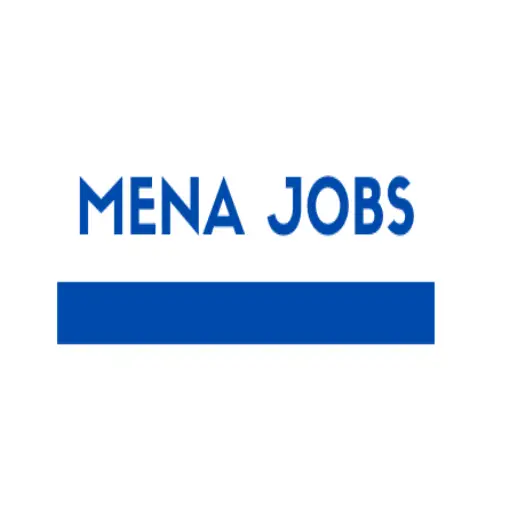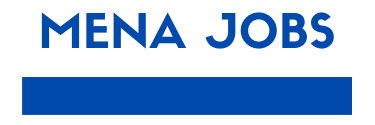
Wildlife Conservation Society
Consultancy for Xe Champhone Rice Cultivation Analysis: An assessment of rice cultivation in and around the Xe Champhone Ramsar site and the potential to raise income levels through the Sustainable Rice Platform and other farm-based improvements
Location: Savannakhet, Lao PDR
Position Type: Consultancy, fixed-term
Report to: WCS Senior Technical Advisor, Savannakhet
This position is open to national and international candidates
1. Background
The Wildlife Conservation Society (WCS) is a US-based global nonprofit conservation organization that saves wildlife and wild places worldwide through science, conservation action, education and inspiring people to value nature.
The WCS Lao PDR program was established in 1993 and has successfully implemented projects with the Lao Government especially the Ministry of Agriculture and Forestry, Ministry of Natural Resources and Environment and Local government agencies with more than 30 projects supported by more than 30 donors. WCS core supports are to improve the management of biodiversity by enhancing technical capacity for government officials and local partners, improving the management of wild places by involving communities in protected areas management including wetlands, and improving responses to wildlife trafficking and wildlife health.
2. Context
The Wildlife Conservation Society has received financing from Agence Française de Développement (“AFD”) and intends to use part of the funds thereof for payments under the following project Ecosystem Conservation through Integrated Landscape Management in Lao PDR (ECILL).
The Xe Champhone floodplains are Lao PDR’s largest wetland ecosystem, of which 12,200 ha was declared Lao PDRs first Ramsar Site in 2010. While the process of annual flooding in the wet season is a key factor for the overall biodiversity productivity, the availability of year-round waterbodies in which aquatic biodiversity must find dry season refuge are of equal importance. These diverse habitats, which include streams, oxbows, lakes, marshes, and reservoirs support endangered freshwater turtles, critically endangered Siamese crocodiles and numerous fish species.
The wetlands are rapidly being converted for the cultivation of dry season rice, which increased from 2,330 ha in 2020 to 2,973 in 2023, an increase of 28% in just three years. This not only means a loss in biodiversity, but also of natural resources such as fish, aquatic plants and animals. These resources were previously accessible to entire communities but are now being rapidly claimed by individuals for rice cultivation. To counter this ongoing threat the project has conducted Participatory Landuse Planning (PLUP) with wetland-user communities and reached agreements on reserving parts of the wetland as a protected refuge for biodiversity (Total Protection Zones, Crocodile Conservation Zones and Fish Conservation Zones) and a part of the wetland as a Community Use Zone, reserved especially for harvesting natural resources, and where rice cultivation is restricted, but permissible in areas already used. Unreserved sections of the wetland are open for rice cultivation.
3. Study area
The study will focus on three villages in Champone district, Savannakhet province, namely: Laonat, Tansoum, Dondaeng. The rice cultivation areas are in three zones:
- The Community Use Zone (CUZ). The CUZ largely relates to the floodplain. In the floodplain only dry season rice is grown.
- Two crops per year zone. Close to the floodplain farmers often grow wet season rice and a second irrigated rice crop in the dry season.
- Wet season rice zone. Further from the floodplain only wet season rice is grown. For each zone a representative sample of farmers must be interviewed (minimum of 10%).
Based on recent PLUP work, the number of farmers and types of rice cultivation in the different zones are below. Farmers may have land in multiple zones. The completed PLUP documents, data and maps will be available for the consultant to use.
Dondeng
- Dry rice inside CUZ
- No. of farmers 338
- Total area (ha) 402
- Dry and wet rice outside CUZ
- No. of farmers 316
- Total area (ha) 435
- Wet rice outside CUZ
- No. of farmers 276
- Total area (ha) 535
Laonat
- Dry rice inside CUZ
- No. of farmers 181
- Total area (ha) 246
- Dry and wet rice outside CUZ
- No. of farmers 250
- Total area (ha) 448
- Wet rice outside CUZ
- No. of farmers 205
- Total area (ha) 227
Tansoum
- Dry rice inside CUZ
- No. of farmers 37
- Total area (ha) 40
- Dry and wet rice outside CUZ
- No. of farmers 113
- Total area (ha) 165
- Wet rice outside CUZ
- No. of farmers 70
- Total area (ha) 93
4. Overall objective
To provide financially rewarding alternatives for current rice cultivation techniques that damage the environment and to prevent further wetland conversion.
5. Study outputs
To achieve the overall objective the project intends to improve the sustainability, efficiency and profitability of farming systems in the floodplain of the Xe Champhone and surrounding areas. The purpose of this consultancy is to provide:
- A comprehensive socio-economic overview of the rice farming / local rice economy in Laonat, Tansoum and Dondaeng villages, in- and outside of the Controlled Use Zone (CUZ), as relates to individual farmers growing wet- or dry season rice or both; this includes a clear chart organizing the costs, revenue, profits and other considerations.
- A technical appraisal of current rice farming methods including a gap analysis as it relates to the Sustainable Rice Platform (SRP) standards.
- An assessment of which SRP Performance Indicators would be suitable for Laonat, Tansoum and Dondaeng villages, in and outside of the CUZ, for wet season rice, dry season rice and mixed wet- and dry season plots.
- An assessment of how SRP can be used to achieve the desired objectives, including an evaluation of the potential benefits (yield, income) from the implementation of SRP improvements and whether improvements made outside the floodplain may be sufficient to offset losses in income from rice production if the cultivation of dry season rice in the floodplain were to decline.
- An evaluation of the value-chain from farmgate to at least rice mill, with identification of actors involved.
- Review of existing labels/certifications in Laos and an overview/analysis of the rice value chain in Laos
6. Study components
The consultant will need to address[1] the following for rice farmers for each of the three zones[2]:
- Annual net income from rice cultivation (income minus all production costs).
- Percentage of net income from rice as a part of overall net household income.
- Details on usage of inputs that affect sustainability such as water use (and source), pesticides and fertilizers used, etc., as required for a full understanding of how farming systems can be made more sustainable.
- Technical details of the farming system applied as required for a full understanding of how farming systems can be made more efficient and productive.
- Relative socio-economic background of farmers and their reasons for farming in the different zones, risk involved, land ownership, access to labour, capital, loans. Assessment of interest of farmer to continue farming in the respective zone.
- Assessment of applicability of improvements to farming systems following SRP guidelines.
- Calculation of expected increase in yield and net income from rice cultivation after following applicable farming improvements.
- Calculation of initial investment costs needed to adopt recommended farming innovations
- Identification of traders and valuation of rice market from farmgate to rice mill
7. Key deliverables and timeline
The period to complete this work is expected to be six months from the contract start date. A briefing meeting with WCS will be arranged at the commencement of the assignment to clarify the scope of the assignment.
- Work plan including any questionnaires prior to fieldwork and establishing an expected Table of Contents for the final report through discussions with Savannakhet Team, Maximum of two weeks after start date
- Data collection in three target villages + Value chain assessment, Maximum of four months after start
- Presentation of initial findings and draft report (allowing for up to 2 revisions), Minimum of one month before final report
- Final feasibility report (full report in English with an abridged Lao Language summary for Govt./communities) and updated presentation. Annex to the final feasibility report includes review of existing labels/certifications in Laos and an overview/analysis of the rice value chain in Laos, Maximum of six months after start date
5. Payment Schedule
- 30% contract value on signing of contract
- 40% on presentation of initial findings and submission of draft report
- 30% of contract value on approved final report and updated presentation
The indicative budget for those Services is US $30,000 max
6. Applicant’s profile
The consultant must conform to the following qualifications:
- Proven experience in conducting farmer interviews, net-income assessments, in relation to rice
- Demonstrated in-depth understanding of the Sustainable Rice Platform
- Exceptional understanding of rice farming techniques and recent innovations
- Fluency in both English and Lao languages is preferred
- Ability to spend long durations in basic conditions
- Excellent interpersonal skills and cooperative attitude
- Good ability to meet and multi-task deadlines
- Dedication to conservation and sustainable development
[1] Based on farmer interviews of a minimum of 10% of total farmers in each zone
[2] Farmers may have fields in multiple zones
How to apply
Interested candidates should apply by emailing a CV and cover letter that address the criteria outlined in the qualifications and experience section, links/examples that demonstrate your to: Jessica Mauer [email protected] latest by 15 October 2023. Please include the Position Title “Application for Consultancy for Xe Champhone Rice Cultivation Analysis” in the subject line of your email.
Please note that only short-listed candidates will be contacted.
